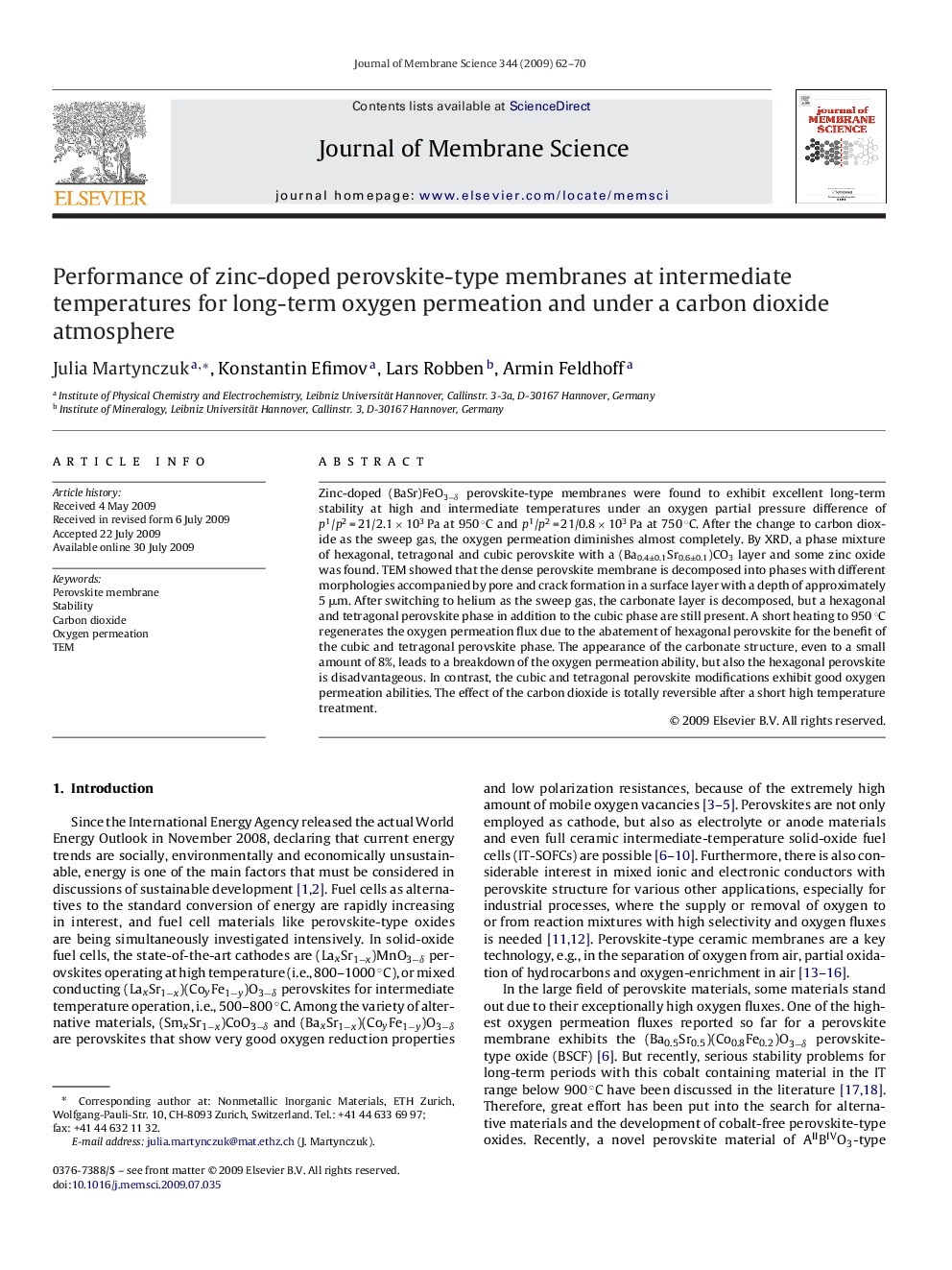| Article ID | Journal | Published Year | Pages | File Type |
|---|---|---|---|---|
| 636726 | Journal of Membrane Science | 2009 | 9 Pages |
Abstract
Zinc-doped (BaSr)FeO3âδ perovskite-type membranes were found to exhibit excellent long-term stability at high and intermediate temperatures under an oxygen partial pressure difference of p1/p2 = 21/2.1 Ã 103 Pa at 950 °C and p1/p2 = 21/0.8 Ã 103 Pa at 750 °C. After the change to carbon dioxide as the sweep gas, the oxygen permeation diminishes almost completely. By XRD, a phase mixture of hexagonal, tetragonal and cubic perovskite with a (Ba0.4±0.1Sr0.6±0.1)CO3 layer and some zinc oxide was found. TEM showed that the dense perovskite membrane is decomposed into phases with different morphologies accompanied by pore and crack formation in a surface layer with a depth of approximately 5 μm. After switching to helium as the sweep gas, the carbonate layer is decomposed, but a hexagonal and tetragonal perovskite phase in addition to the cubic phase are still present. A short heating to 950 °C regenerates the oxygen permeation flux due to the abatement of hexagonal perovskite for the benefit of the cubic and tetragonal perovskite phase. The appearance of the carbonate structure, even to a small amount of 8%, leads to a breakdown of the oxygen permeation ability, but also the hexagonal perovskite is disadvantageous. In contrast, the cubic and tetragonal perovskite modifications exhibit good oxygen permeation abilities. The effect of the carbon dioxide is totally reversible after a short high temperature treatment.
Related Topics
Physical Sciences and Engineering
Chemical Engineering
Filtration and Separation
Authors
Julia Martynczuk, Konstantin Efimov, Lars Robben, Armin Feldhoff,
